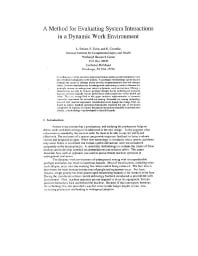Mining Publication: A Method for Evaluating System Interactions in a Dynamic Work Environment
Original creation date: January 1997
Authors: LJ Steiner, FC Turin, KM Cornelius
NIOSHTIC2 Number: 20024649
Advances in Occupational Ergonomics and Safety II. Amsterdam, Netherlands: IOS Press and Ohmsha, 1997 Jan; :603-606
As technology evolves, accidents may occur because human-system interactions were not considered adequately in the process. A systematic methodology can be used to evaluate the causes of mishaps and to develop recommendations that will enhance safety. A recent trend observed in underground coal mining is used to illustrate this principle because an underground mine is a dynamic work environment. Mining is characterized not only by frequent geologic changes but by technologic evolution that can seriously degrade human performance and compromise worker health and safety. The case exemplified in this paper involves implementation of remotely controlled equipment for extended cut mining. Extended cut mining technology evolved with minimal ergonomic consideration even thought the change from on-board to remote machine operation dramatically modified the role of the human component. In response to concern that system interactions should be examined more closely, a methodology was developed to identify hazards.

NIOSHTIC2 Number: 20024649
Advances in Occupational Ergonomics and Safety II. Amsterdam, Netherlands: IOS Press and Ohmsha, 1997 Jan; :603-606
- Engineering Considerations and Selection Criteria for Proximity Warning Systems for Mining Operations
- A Gas Pressure-Based Drift Round Blast Design Methodology
- Job Design: An Effective Strategy for Reducing Back Injuries
- Machine Situational Awareness (MSA) - Framework and Algorithms for Assured Autonomy in Mining
- Predicting System Interactions in the Design Process
- Programmable Electronic Mining Systems: Best Practice Recommendations (In Nine Parts): Part 5: 4.0 Independent Functional Safety Assessment
- Systems Approach to Design
- Toolbox Training For Construction Aggregate Miners